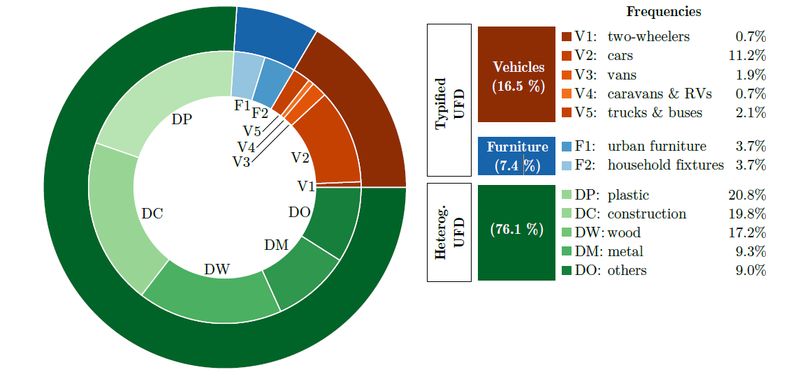Urban Flood Drifters
Contact: Mario Franca
Urban floods often transport large-scale debris, including tree branches, vehicles, construction materials worsening flood damage and obstructing waterways.
As commonly observed in urban floods, flow-driven debris accumulates at hydraulic infrastructures like bridge spans and within the urban grid, significantly exacerbating flood risk by provoking structural failures and higher flood levels. With global warming and population growth, effective strategies to address the enhancement of urban flood risk due to presence of large-scale debris are urgent. This requires understanding the interactions between flood flow, debris, and urban infrastructure.
Lately, a new paradigm in flood management is emerging focusing on integrating the transport of debris in flood simulations. This is however a complex task due to an epistemic deadlock caused by a lack of an adequate and generalized analytical framework to simulate the transport of debris.
As a first step, we characterized the large-scale debris transported during major floods of the past 25 year and investigated critical conditions for their mobilization. New approaches to quantify stochastically the amount of large-scale debris which could be entrained into a river during a flood are the next step to, together with physics-based numerically modelling of floods, define probabilistically clogging and the related decreased discharge capacity or urban channels networks.
Publications:
Bayón, A., Valero, D. & Franca, M. J. Urban Flood Drifters (UFDs): Identification, Classification and Characterisation: https://arxiv.org/abs/2304.01780
Valero, D., Bayón, A. Franca, M. J. Urban Flood Drifters (UFDs): Onset of Movement: https://arxiv.org/abs/2311.14602
This project is a collaboration between:
- Karlsruhe Institute of Technology
- Imperial College London (UK)
- Universitat Politècnica de València (Spain)

